On Santorini, the village folk tell stories of ghosts. Old men sipping ouzo in the tavernas say they’ve heard the music of Pan’s pipes and the clicking of little hooves in the branches of the plane trees. There is a feeling that something mysterious lingered behind after the great explosion that destroyed Santorini during the Bronze Age, and you can’t question the superstitions of the islanders.
There is no adequate description of this remarkable island. The author, Lawrence Durrell said: “The reality is so astonishing that prose and poetry will forever be forced to limp behind.” It is an island steeped in legend and tragedy. Once the centre of a flourishing culture, its destruction in the year 1250 BC was the result of one of the greatest volcanic eruptions ever recorded in history. The aftermath of the explosion, the earth tremors and tidal waves, were responsible for the destruction of the Minoan civilization on nearby Crete.
In ancient times they called the island “Kalliste” (the most beautiful). In fact, there is a theory that this was the legendary “Atlantis” mentioned in Plato’s dialogues. Today it is known as “Santorini”. It is the farthest island of the Cyclades chain southeast of mainland Greece, some 128 nautical miles from Pireaus.
The volcano that destroyed the island was known as “Hephaesto’s Forge”. Now, where the blacksmith god’s forge once steamed and the sloping hills were rich with vineyards and olive groves, there is a deep basin known as the “Caldera”, and the five islands shaped in a crescent forming the lips of the basin are all that remains of beautiful Kalliste.
Santorini is the main island, 72 sq. kilometers; population is 15,500 and that increases during the holiday season when the cruise ships arrive. There are three ports on the island serviced by ferries and cruise ships. Oia, on the northwest tip; Thera, just a few kilometers south along the ridge; and the new port of Athenios, the only anchorage which is connected to the roads serving the villages. Regular boat services connect Santorini with mainland Greece, Crete, and many of the surrounding islands. There is also an airport with daily service to and from Athens. Taxis, buses and private vehicles provide transportation for a modest fee to any part of the island.
I took the bus into the town from the port. The road switches back and forth up the side of the sheer cliffs until it unwinds at the top on a wide plateau. Gnarled trees twist their branches in a canopy over the narrow road. The dramatic ride up from the port is only the beginning of an unforgettable adventure. Santorini is a mysterious place, haunted and eerie with the ghosts of the long-ago civilization. Greek folklore has picked the island as a haven for vampires and under the ghostly pale light of a full moon, the surrealistic landscape gives the stories credibility.
Santorini is perhaps the most popular Greek island destination. In recent years prices have risen making it one of the more expensive islands to visit, and usually it is crowded with tourists, but it’s well worth a visit. There’s a plethora of villas and hotels and for the backpacking crowd, there are campsites at two beaches.
On my first visits to Santorini I preferred to stay at Perissa Beach. Here the limestone cliffs rise out of the clear turquoise sea and the beach is littered with pumice and chunks of molten lava, the coarse black sand jewel-like with multi-coloured pebbles. Tavernas along the beach serve delicious meals and for entertainment at night there are clubs with live music. An energetic hike up the cliff trail from the beach leads to the excavations of ancient Thera, 400 meters above the sea, providing a panorama view of the island shoreline. There is also access to the site from Kamari Beach. At Kamari, which is near the airport, there are hotels and restaurants along the attractive stretch of beach. Both Perissa and Kamari are accessible from the port by bus or taxi. One particularly unique beach is the “Red Beach” where the sand is literally a reddish colour from the russet cliffs that rise behind it.
More recently, I stayed in a modestly priced hotel at the edge of town on a dusty road where farmers led their donkeys laden with produce for the market. The main town of Thera perches on the crest of the ridge so precariously it seems that any moment an earth tremor might shake it into the sea. A regular bus service into Thera services each of the villages on Santorini. The bus jolts along the winding roads, through fields of pistachios and vineyards, past rows of abandoned windmills, stopping at one or two dazzling white towns built along edge of the ragged cliffs.
The main town, Thera, is best known for the donkey trail that zigzags for 585 terraced steps up the Cliffside from the old port. The donkeys, with their brightly decorated harnesses and bells, and the nut-brown, weathered donkey-men toil up and down the trail carrying people from the jetty to the town. At one time this was the main transportation up from the old port. Now there is a sleek cable car leaving the terminal every fifteen minutes for a fee slightly higher than traveling by the donkeys.
The architecture of Thera is unique. Because of the sharp slopes and sheer cliffs that compose the geological features of the land, some dwellings are ‘burrows’ in the side of the cliffs, with the roof of one house becoming the courtyard or terrace of the house above. The architecture has been adapted to suit the landscape and the dry climate. Black lava, pumice and china clay are the building materials along with timber beams and vine branches layered with mud, then whitewashed. These vaulted houses, with angles and curves blending with the island’s terrain, cluster on the cliffside with a panorama view of the crater that rises out of the centre of the basin below. Santorini sunsets are a spectacle you won’t want to miss. While the sky explodes with colour, the tavernas on this ridge play classical music, inspiring the artists and photographers who gather early to obtain the best vantage point.
While enjoying the view, sample the famous island wines, light, volcanic wines characteristic of the island. My introduction to Santorini wines was during my first visit some thirty years ago. I fell in love with Lava wine, from the Koutsoyannopoulos’ Volcan Wineries. Perhaps I was attracted first by the appealing label: a copy of a Minoan fresco with a fisherman holding bundles of his catch. But when I tasted the wine, a medium rose with a velvety taste and aroma of fresh fruit, it became one my favorites.
On this trip, I took a taxi from Fira to the Boutari Winery located in Megalochori on a high plateau with a wind-swept view of the six acres of vineyards. The Boutari Winery is one of the leading wineries on Santorini, I was invited for a tour and introduced to the art of tasting and sampled the different varieties of both red and white wines.
Wine has been produced on Santorini since ancient times. It is most famous for its white grape varieties although some red grapes can be found. About 1,200 hectares of land on Santorini are under vine. The Koutsoyannopoulos Wine Museum on Santorini, located in a natural cave eight meters below ground, presents the history of wine and the lives of the vine-growers on Santorini since the 1600’s.
What makes these wines special is the way the grapes are grown. The vines are coiled close to the ground to protect them from the searing heat and the wind. Because the wind is so strong in Santorini this keeps the vines from being damaged or blown over.
Tours are available to the various parts of the island including the monasteries. If you chose to go up to the top of the cliff to visit ancient Thera make sure it isn’t too windy. When I went up by taxi, I could barely stand outside to take photos and had to cling to the cab door to keep from being blown away.
Be sure and visit the archaeological site of Akrotiri. The last time I visited the site was closed due to an accident, but it has now reopened. The excavation disclosed a Minoan Bronze Age settlement buried under the volcanic eruption. Artifacts from the site are in the nearby Museum of Prehistoric Thera. At Akrotiri you’ll get a glimpse of what life was like on Thera before the massive earthquake destroyed it and the people mysteriously vanished. As no skeletons have ever been found, it appears that the city had been successfully evacuated. But where did the people to go? Perhaps it’s their ghosts who haunt the wind-swept island, their voices heard by the village folk.
Written by W. Ruth Kozak for EuropeUpClose.com

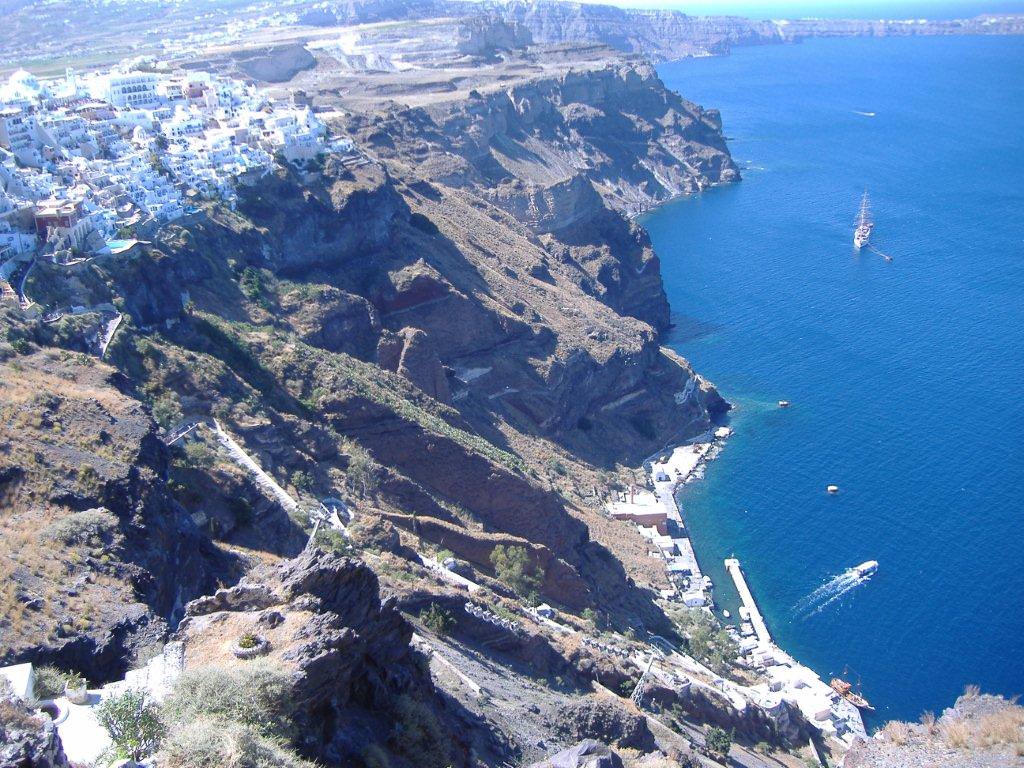
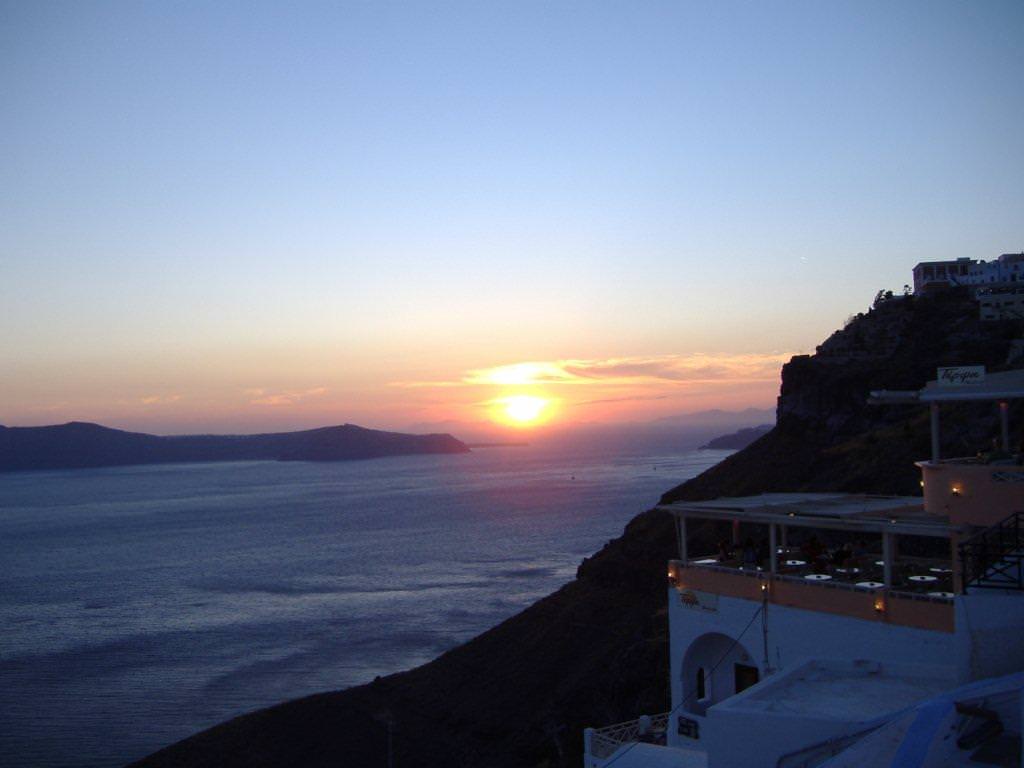
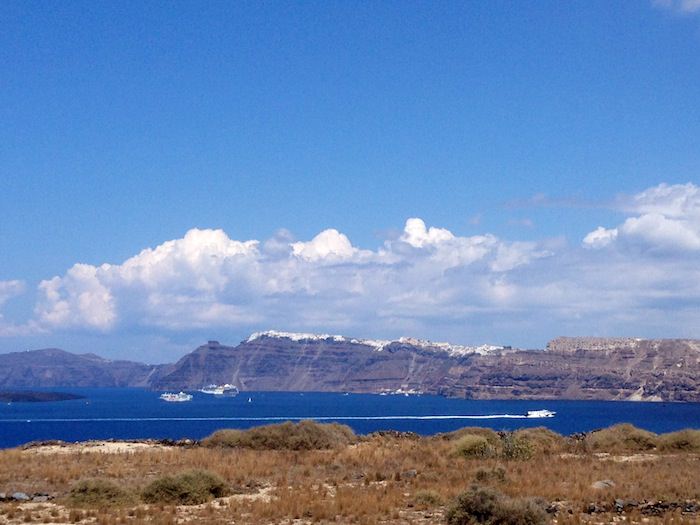
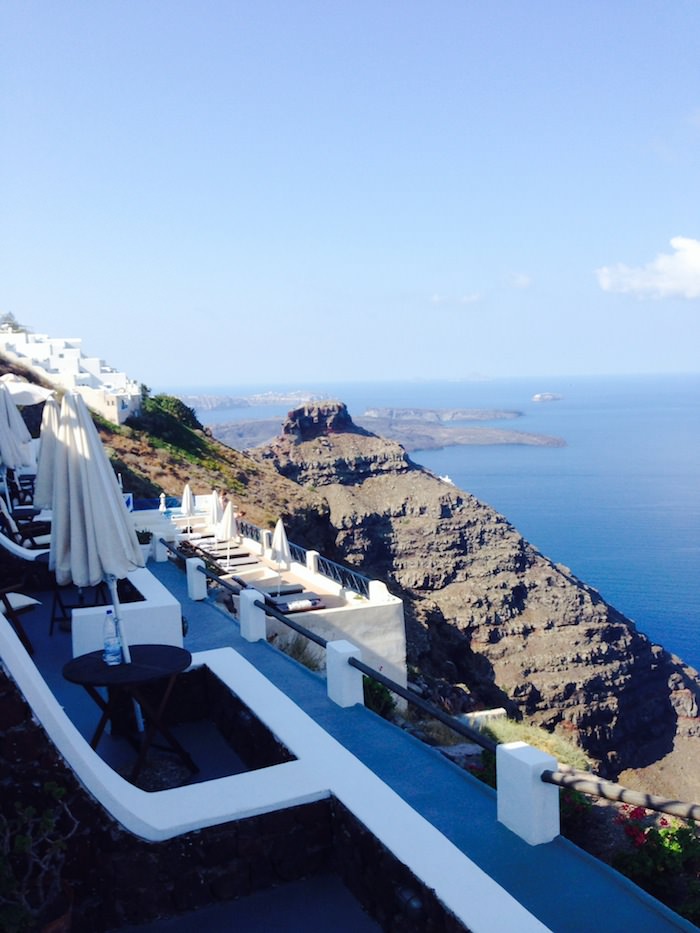
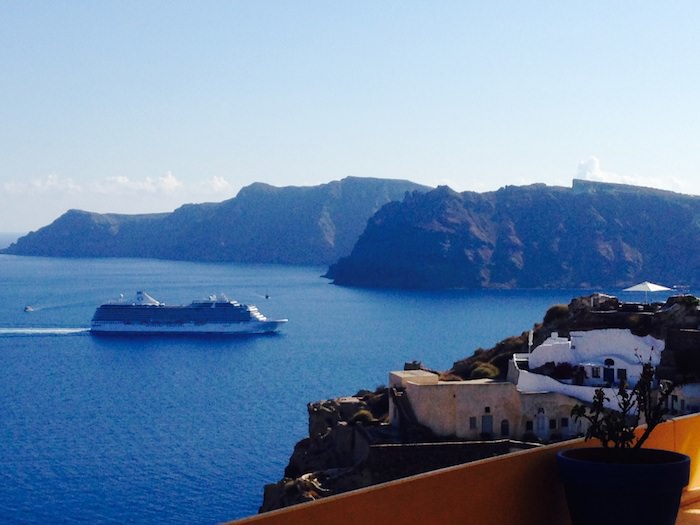
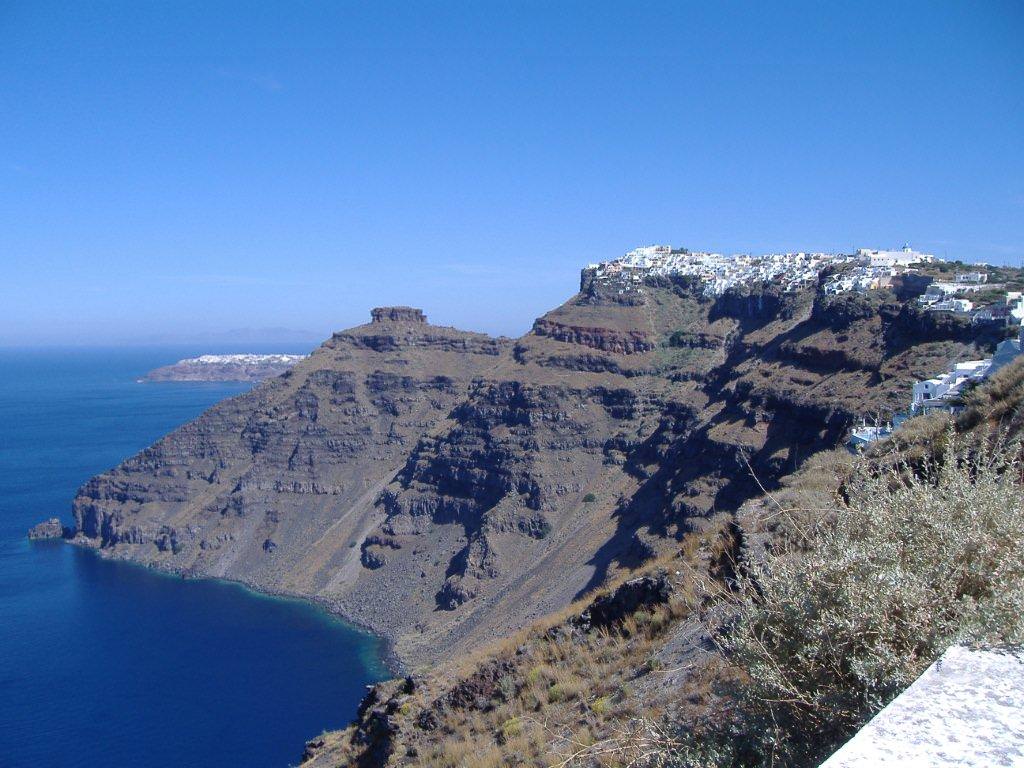

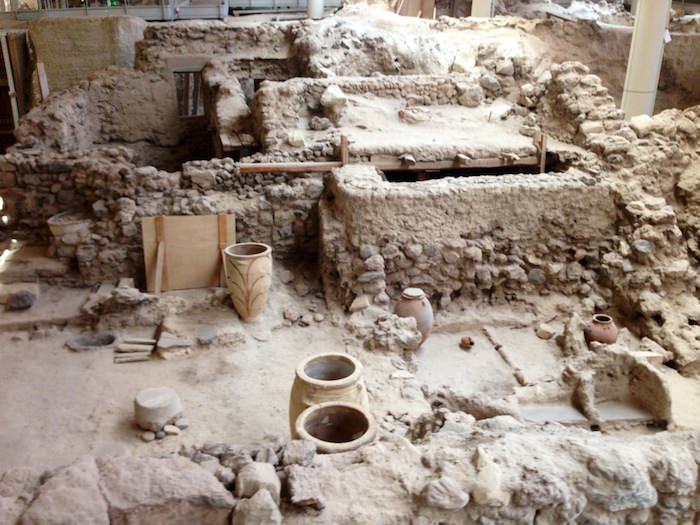
??????????, ?????? ??? ??? «????????» ?????????? | Santorini News ?? ??? ??????? ??????.
Thursday 9th of October 2014
[…] https://europeupclose.com/article/ghosts-legends-and-a-glimpse-of-atlantis-in-santorini/ […]